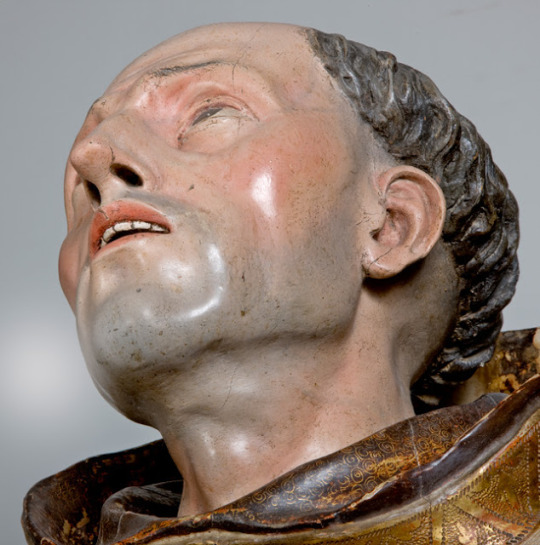#dylan scruton
Photo


Dylan Scruton by Jake O’Donnell
4K notes
·
View notes
Text
Remembering the great architects and designers we lost in 2020
To round off our review of 2020, Dezeen looks back at the designers and architects who passed away this year, including Italian designer Enzo Mari, British entrepreneur Terence Conran and Bulgarian artist Christo.
A number of the people we lost in 2020 were victims of coronavirus. They include fashion brand Kenzo's founder Kenzo Takada, architect and critic Michael Sorkin, and Arper founder Luigi Feltrin.
The year also saw the passing of Manlio Armellini, one of the founding fathers of the Salone del Mobile, Hidden Art founder Dieneke Ferguson, French interior designer Christian Liaigre and Enrico Astori, co-founder of Italian design brand Driade.
Other creatives who passed away this year include Bill Menking, co-founder of The Architect's Newspaper, Italian architect Vittorio Gregotti, architect Adolfo Natalini and philosopher and architecture writer Roger Scruton.
In December, we also lost graphic designer Martin Lambie-Nairn, fashion designer Pierre Cardin and textile designer Jack Lenor Larsen.
Terence Conran
Iconic British furniture designer Terence Conran, the founder of furniture brand Habitat and London's Design Museum, passed away in September at the age of 88.
Conran was born in 1931 in Kingston upon Thames, UK. He founded Habitat in the 1960s, introducing a number of novel European designs such as flatpack furniture to the UK, and went on to found The Conran Shop in 1973. In 1983, Conran was knighted.
The designer, who established London's Design Museum in 1989 in a former banana warehouse at Butler's Wharf, is remembered as one of the most influential designers of his generation.
"No one has done more to create modern Britain than Terence Conran," said former Design Museum director Deyan Sudjic.
Find out more about Terence Conran ›
Christo
Bulgarian artist Christo was best known for wrapping buildings, including the Pont Neuf in Paris and Berlin's Reichstag, in fabric. He began creating the large-scale installations in the 1960s together with his late wife Jeanne-Claude.
She passed away in 2009 but Christo continued to work on the installations including his first major UK sculpture, the London Mastaba on the Serpentine Lake. Christo, who was born in 1935 in Bulgaria and escaped the then communist country to the west in 1957, died of natural causes at the age of 84.
Find out more about Christo ›
Enzo Mari
October saw the passing of Enzo Mari. The "giant" of Italian design died at age 88 from complications relating to coronavirus, followed by his wife Lea Vergine just a few hours later.
Mari, who was born in 1932, had a prolific career of 60 years that saw him design products for brands including Artemide, Alessi and Danese. Among them were the Delfina chair, which was designed for Driade in 1974 and won the Italian Compasso d'Oro industrial design award in 1979.
As well as working as a designer, Mari was an author and published the Autoprogettazione, a guide to making your own furniture from boards and nails, in the 1970s.
Find out more about Enzo Mari ›
Milton Glaser
Milton Glaser, the designer of the "I New York" logo, passed away in June in New York on his 91st birthday. He created the logo, which was designed to create a positive emblem for the then crime-ridden metropolis, in 1977.
Glaser's six-decade career also saw him design posters for Bob Dylan, design logos for DC Comics and co-found the New York Magazine. The life-long New Yorker was born in 1929 in the Bronx and studied at The Cooper Union in New York. In 1954 he co-founded Push Pin, an influential graphics studio, before striking out on his own with Milton Glaser Inc. in 1974.
His recent work includes contributing to the Get Out the Vote initiative ahead of the 2016 US presidential campaign.
Find out more about Milton Glaser ›
Cini Boeri
Italian architect and designer Cini Boeri, the founder of Cini Boeri Architetti and one of the first post-war female Italian designers to rise to prominence, died in Milan at the age of 96.
She was known for her iconic seating designs and modular furniture, much of which is still in production. Among her work is Strips, a modular seating system for which Boeri won the Compasso d'Oro industrial design award.
Boeri also worked as an architect and completed residential projects as well as offices, shops and exhibition designs. She is survived by her three sons, one of whom is architect Stefano Boeri.
Find out more about Cini Boeri ›
Kenzo Takada
Kenzo Takada, the Japanese designer who founded fashion brand Kenzo, was one of the creatives taken by coronavirus this year. The designer, who was based in Paris, died from the virus at the age of 81.
His Kenzo brand, founded in 1970 and originally called "Jungle Jap," was a success from the beginning. Rebranded as Kenzo, it opened its flagship Paris store in 1976 and would become influential due to its use of bright colours and Japanese prints and textiles.
One of the defining fashion designers of the 1970s and 80s, Kenzo retired from fashion in 1999 but continued to design costumes for the opera.
Find out more about Kenzo Takada ›
Michael Sorkin
The death of New York-based architect and critic Michael Sorkin shocked the architecture world in March when he passed away at the age of 71 from coronavirus complications.
Sorkin, who was head of his eponymous architecture firm and president of non-profit research group Terreform, was the architecture critic for New York news and culture paper The Village Voice for 10 years.
He was also the director of the graduate programme in urban design at City College of New York (CCNY) and had taught at institutions including London's Architectural Association and the Cooper Union and Harvard University in the US.
"The architecture world has lost a brilliant mind," said Harriet Harriss, dean of New York's Pratt Institute School of Architecture.
Find out more about Michael Sorkin ›
Jan des Bouvrie
Known as the "Grandmaster of the white interior" in his native country, Dutch designer Jan des Bouvrie introduced the white, minimalist interior to the Netherlands.
The designer, who celebrated 50 years in the design industry in 2019, was also known for creating the Cube sofa. As well as furniture, Des Bouvrie designed a number of residences in the Gooi area of Holland. He also worked on collaborations with Dutch mass-market brands such as hardware store Gamma and electronics company Philips.
Des Bouvrie was born in 1942 and died at the age of 78 after a long battle with prostate cancer.
Find out more about Jan des Bouvrie ›
Kansai Yamamoto
Japanese fashion designer Kansai Yamamoto, who was best known for his dramatic costume designs for David Bowie, died at the age of 76 from acute myeloid leukaemia. Yamamoto's career started in 1971 when the designer founded his studio Yamamoto Kansai Company.
Bowie saw his first collection and became a client, showcasing Yamamoto's exuberant designs on stage. In 1992, Yamamoto showed his final collection, but he stayed in the creative industries by becoming an events producer and, later, designing costumes for Elton John and Lady Gaga.
Find out more about Kansai Yamamoto ›
Henry Cobb
Pei Cobb Freed & Partners co-founder Henry Cobb passed away in 2020 at the age of 93. Cobb, who was called "one of the great architects of our time" by critic Paul Goldberger, was the architect of Boston's John Hancock Tower.
Other key projects during his career, which spanned almost 70 years, include the Charles Shipman Payson Building at Maine's Portland Museum of Art in 1983 and the Palazzo Lombardia in Milan, which was completed in 2013. At the time of Cobb's death, work was underway at a number of his projects, including the International African American Museum Charleston in South Carolina.
Cobb was born in Boston in 1926 and founded IM Pei together with Chinese-American architect Pei, whom he'd met at Harvard University, and American architect Eason H Leonard in 1955. The firm was renamed Pei Cobb Freed & Partners in 1989.
Find out more about Henry Cobb ›
Syd Mead
Industrial designer and concept artist Syd Mead was perhaps best known for his visual concept designs for Blade Runner, the 1982 sci-fi film. The American artist was born in 1933 and started his career in vehicle design for Ford Motor Company.
In the 1970s he started working on feature films and created the design for a number of sci-fi movies, including Tron, Johnny Mnemonic and Aliens.
He passed away at the age of 86 in his home in California due to complications from lymphoma cancer. Among those paying tribute to his work were Tesla's Elon Musk, whose Cybertruck is said to have been inspired by Blade Runner.
"Rest in peace Syd Mead. Your art will endure," Musk tweeted.
Find out more about Syd Mead ›
The post Remembering the great architects and designers we lost in 2020 appeared first on Dezeen.
1 note
·
View note
Photo


Dylan Scruton by Jake O’Donnell
7K notes
·
View notes
Photo

‘Song of the soul that is glad to know God by faith’ 14 December – The Memorial of St John of the Cross (1542-1591) Doctor of the Church
There have been a number of translations into English of the works of St John of the Cross. One of the translations which has been considered one of the best is that by the Anglo-South African convert poet Roy Campbell (2 October 1901 – 22 April 1957).
In October 2009, Roger Scruton wrote about Roy Campbell in his article “A Dark Horse” published in The American Spectator. He was hated by the English “left establishment” especially because of his position on The Spanish Civil War.
The Wikipedia entry says of Roy Campbell that he “was considered by T. S. Eliot, Edith Sitwell and Dylan Thomas to have been one of the best poets of the period between the First and Second World wars but he is seldom found in anthologies today.”
Campbell’s translations of the poetry by St John of the Cross were lavishly praised by Argentine writer Jorge Luis Borges
For more about Campbell`s work, R J Dent has published an essay on Roy Campbell and his work entitled: Violence and exquisite beauty – the aesthetics of Roy Campbell.
Here is a poem of St John of the Cross with the translations by the late Roy Campbell.
‘Song of the soul that is glad to know God by faith’
How well I know that fountain’s rushing flow
Although by night
Its deathless spring is hidden. Even so
Full well I guess from whence its source flow
Though it be night.
Its origin (since it has none) none knows:
But that all origin from it arose
Although by night.
I know there is no other thing so fair
And earth and heaven drink refreshment there
Although by night.
Full well I know the depth no man can sound
And that no ford to cross it can be found
Though it be night
Its clarity unclouded still shall be:
Out of it comes the light by which we see
Though it be night.
Flush with its banks the stream so proudly swells;
I know it waters nations, heavens, and hells
Though it be night.
The current that is nourished by this source
I know to be omnipotent in force
Although by night.



After the beatification of St John of the Cross on 25 January 1675, the Carmelite convent of Nuestra Señora de los Remedios near Seville commissioned this life-sized statue from the young Sevillian sculptor, Francisco Antonio Gijón, then only 21.
The figure of the saint holds a quill pen in his right hand and, in the left, a book with a model of a mountain surmounted by a cross, which refers to his mystic commentary, “The Ascent of Mount Carmel.”
Francisco Antonio Gijón (1653–c. 1721) and unknown painter (possibly Domingo Mejías)
Saint John of the Cross
c 1675
Painted and gilded wood
168 cm (66 1/8 in.)
(via AnaStpaul – Breathing Catholic)
#songofthesoulthatisgldtoknowgodbyfaith#stjohnofthecrosspoem#mypic#catholic#december14stjohnofthecross#stjohnofthecross#catholicism#catholicpoetry
5 notes
·
View notes
Text
“La fine è tutto fuorché la fine”: su Roy Campbell, il poeta che salvò Giovanni della Croce dal rogo e che Tolkien trasfigurò in Aragorn
Il 6 ottobre del 1944, al figlio Christopher, J.R.R. Tolkien scrisse così: “Si tratta di un discendente dei protestanti dell’Ulster, di famiglia sudafricana. Quasi tutti i suoi avi hanno fatto entrambe le guerre. Lui si è convertito al cattolicesimo dopo aver fatto da scudo ai padri carmelitani di Barcellona contro i comunisti – invano, però, furono tutti catturati e passati per le armi, lui stesso per poco non ci rimise la pelle. Ma ha messo le mani sull’archivio dei Carmelitani e l’ha posto in salvo dagli incendi di guerra, trascinandoselo per tutta la Spagna in mano ai rossi. Impossibile, in ogni caso, darti una idea del suo carattere: soldato e poeta, e per giunta convertito. Quanto di più lontano dalla sinistra-panzer in velluto a coste: tanto panzer che è corsa al riparo negli Stati Uniti”. Poi Tolkien relaziona il figlio in merito alla scrittura del Signore degli Anelli. L’incontro con quel poeta combattente, tra le fiamme della fede, avvenuto qualche giorno prima, lo ha folgorato. Sarà lui l’icona, l’idea primordiale, intorno a cui tessere il personaggio di Aragorn, ‘Granpasso’, l’erede che elude la regalità, il re ridotto a vagabondo.
*
Tolkien – nato in Sudafrica pure lui, e non è un dato trascurabile – sapeva guardare oltre l’artiglio dei pregiudizi. Roy Campbell, più giovane di lui di dieci anni, portava il marchio del reietto, pensava che la parola poetica dovesse essere giustificata da scelte radicali, era un vagabondo, ostaggio di incomprensioni e di fraintendimenti, braccato da una colpa che aveva lavorato a lungo, con abilità orafa.
*
L’episodio miliare nella vita di Campbell accade nel marzo del 1936. Campbell è in Spagna da tre anni, è un uomo devoto alle vertigini, si dà al morso della Chiesa cattolica. Da Barcellona, passa a Toledo, vive insieme ad alcuni carmelitani, la Spagna arde di guerra. I repubblicani avanzano, assediano Toledo: gli stessi padri che confermano Roy Campbell e la moglie nella fede – a cui si aggiunge la benedizione del Cardinale Isidro Gomá y Tomás, in un rito serale di allucinato valore simbolico – vengono accerchiati, predati, uccisi, “in un’atmosfera che doveva ricordare in modo sinistro le catacombe dei primi cristiani… i diciassette monaci del Carmelo vengono condotti in strada e fucilati. Campbell scopre i loro corpi. Sul muro di una chiesa campeggia la scritta, ‘così colpisce la Cheka’” (Joseph Pearce). Lì, Roy Campbell sceglie. Sta al fianco di Franco – dalla parte sbagliata. Mentre gli intellettuali formidabili pendono ‘a sinistra’, Campbell opta per l’altro mondo. Soprattutto, mette in salvo dai tesori dei carmelitani i libri di Giovanni della Croce, che altrimenti sarebbero stati bruciati insieme agli arredi del monastero. Li tradurrà, con furore mistico che dicono speciale. “Mi è stato maestro”, dice, il poeta, del mistico. Intanto, tutti gli voltano le spalle.
*
Aveva già rotto i ponti – e le scatole – prima della guerra civile spagnola, Roy Campbell, rampollo di buona famiglia anglofona, nato a Durban, Sudafrica, nel 1901, approdato in Inghilterra, a Oxford – ma non entrò a studiare – esattamente un secolo fa, subito ben introdotto – piaceva a Wyndham Lewis e a Thomas S. Eliot – con ansie un poco mitomani, di certo suicidali. Campbell pigliava la vita a morsi: diseredato dalla famiglia d’origine, nel 1924 porta all’altare l’audace e selvatica Mary Margaret Garman, ricca, affiliata ai Bloomsbury di Virginia Woolf. Roy diceva che Mary era qualcosa tra Saffo e Santa Teresa d’Avila: di certo, lei si diede, maritata, a una relazione saffica con Vita Sackville-West. La cosa diede noie alla Woolf e mandò in rabbia Roy, poeta volitivo, con i cappelli a tesa larga, un po’ Baudelaire un po’ Indiana Jones. La vendetta fu incisa nell’acido: The Georgiad è una satira spietata contro gli intellettuali inappetenti alla vita, instabili, tutta mente e niente carne, che speculano di vasti temi ‘sociali’ dalla gabbia di cristallo della loro australe austerità. Roy Campbell aveva capito molto della malia e della finzione del letterato. Chiaramente, non gliela perdonarono: nel 1930 Roy, moglie e figli si trasferiscono in Provenza, poi sarà l’ora spagnola. A leggere i ricordi della figlia, Anna, Roy e Mary furono genitori incapaci – “non ci hanno mai spiegato come ci si siede a tavola… o quando bisogna cambiarsi le mutande” – che quasi sempre affidavano i pargoli a tate improvvisate. In ogni modo, il matrimonio durò, fortificato, forse, dall’estetica conversione di entrambi.
*
Il punto, piuttosto, è questo. Roy Campbell è uno dei più potenti poeti in lingua inglese del secolo scorso. L’opera più grande la scrive a 23 anni, nel 1924, s’intitola The Flaming Terrapin, è un poema di altisonante vitalità, quasi il controcanto alla pallida Terra desolata di Eliot (che amava molto il bistrattato Roy). Se non avete mai sentito dire di Roy Campbell, non fatevene un cruccio: in Italia non l’ha tradotto nessuno. Anche in UK, in effetti, nonostante la folta bibliografia (e la biografia di Joseph Pearce, Unafraid of Virginia Woolf: The Friends and Enemies of Roy Campbell, 2004), se possibile evitano di pubblicarlo. Eccessivo in tutto – soprattutto nel linguaggio lirico, grave di immagini, pieno di bordate retoriche, magnetico – Roy Campbell, nel 1939, pensa bene di pubblicare un poema satirico che esalta, con verve, la vittoria di Franco, Flowering Rifle: A Poem from the Battlefield of Spain – con cui si garantisce la damnatio memoriae e l’epiteto – tornato di moda – di poeta “fascista”. In realtà, durante la Seconda guerra si scaglia contro i Nazi, prega di essere arruolato nella British Army, continua a sfottere i poeti che blaterano bene di Hitler dagli attici newyorchesi ma non scendono a combattere, fu inviato a Nairobi e a Mombasa, ma invero, falciato dalla malaria, combatterà poco. C.S. Lewis, a differenza di Tolkien, non lo sopportava, “ha il lezzo tipico dei cattolici fascisti”, diceva. Roy trovò da fare alla BBC, diventò amico intimo di Dylan Thomas – più che parlare di affari letterari si gettavano a bere come disperati. Durante una lettura pubblica, diede un cazzotto a Stephen Spender, colpevole, insieme a Auden, di essere un poeta senza spirito, solo parole al vento e condanne rivolte all’aria, sovietico per vezzo. Spender, tuttavia, continuò a dire “è un grande poeta… dovete capirlo”. Dal 1952 si mosse verso il Portogallo di Salazar: conosceva gli stenti, pensava con amore al martirio, scrisse la sua autobiografia, Light on a Dark Horse. Dopo aver letto le sue traduzioni di Giovanni della Croce, pare che Borges fosse stato sul punto di convertirsi seduta stante, poi sbottò, sono migliori dell’originale. Tradusse anche Rimbaud, anche Baudelaire, e morì, in un incidente stradale, vicino a Setúbal, nel 1957, il lunedì di Pasqua. “Al momento dello schianto che lo ha ucciso, la reputazione di Campbell era pari a quella dei più alti poeti del tempo. La sua ruvida personalità, incisa nel diamante, la sua capacità narrativa irrefrenabile, furono accolte con stupore nella Londra del dopoguerra. Anche se ha continuato a maltrattare l’establishment della sinistra in modi eccessivi… fu considerato come uno dei più eminenti personaggi letterari dell’epoca. Per Evelyn Waugh era ‘grande, bello, semplice, dolce e selvaggio’, per Laurie Lee era ‘uno degli ultimi enormi artisti pre-tecnocratici, la cui poesia, come nel caso di Byron o di D’Annunzio, è un impegno fisico con la vita’. Fu ammirato da Thomas S. Eliot, che lo pubblicò, da Sitwell, che lo idolatrava, da Wyndham Lewis e da Charles Tomlinson”, scriveva dieci anni fa Roger Scruton, in un vasto articolo pubblicato su “The American Spectator”, A Dark Horse. “Campbell scrisse pentametri vigorosi, nei quali ha distillato la più prodigiosa serie di immagini, inebrianti di vita, mai letta in altri poeti del XX secolo. Era veemente, spesso satirico, a volte insostenibile. Era un avventuriero spericolato – era un sognatore di sogni”, scrive ancora Scruton. Non penso che esista didascalia più bella per un poeta – che di solito è uno sconfitto, certe volte sceglie la sconfitta, tenta, ingiustificato, una giustificazione estetica, mette il ‘bel gesto’ prima del buon cervello, si lancia, a scartavetrare l’identità. Che sia ancora tabù, che il suo nome sia al bando, è un vanto; che nessuno lo traduca, ancora, è idiozia cristallina, ormai consueta, purtroppo. Questi non sono tempi per i poeti – che sbagliano con ostinata arrendevolezza, perché qualcuno li baci in bocca. (Davide Brullo)
***
Contro il cielo oscurato si sono raccolti innumerevoli
avvoltoi bellicosi che vogliono fioccare sul mio corpo;
contro il debole arco della trama celeste
dietro l’oscurità che incombe sulla notte ancora nascosta;
contro il fatto che crediamo che la fine
sia tutto fuorché la fine, e che la carne stravolta si sbricioli
e che l’animo orgoglioso, preso a nolo dal suo tempio, cada
nell’oscurità dove batte contro il vuoto dei venti
in un vortice che percorre l’aria come fanno le zanzare – cos’è
che ci marchia sulle cime di montagna,
così senza paura sul ciglio dell’abisso,
dove nello spazio del terrapieno roccioso e sottile sprofondano
e sibilano i venti abbandonati?
È il cantare, silente, dell’anima:
Contro i tempi che cambieranno e le età di tempesta che fluiscono,
io sono il vecchio cacciatore delle pianure
che affetta la pelle increspata del Bisonte:
parola d’ordine: io sono il sognatore che rimane per voi,
l’Uomo che si ritaglia nitido sull’ultimo orizzonte!
Roy Campbell
* la traduzione è di Andrea Bianchi
**In copertina: Roy Campbell e la moglie Mary, a sinistra, negli anni Venti, insieme al pittore Jacob Kramer e alla musa, Dolores
L'articolo “La fine è tutto fuorché la fine”: su Roy Campbell, il poeta che salvò Giovanni della Croce dal rogo e che Tolkien trasfigurò in Aragorn proviene da Pangea.
from pangea.news http://bit.ly/2QCRPJW
1 note
·
View note










